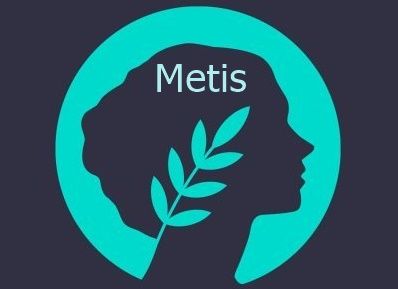Metis, what is it? The layer 2 that divides your costs by 100. Discover all its features.

Metis aims to revolutionize the way people/businesses collaborate using blockchain technology and solve Layer 1 problems by providing a single solution to Ethereum Mainnet’s biggest challenges.
VISION
To accelerate the transition of people to blockchain for open, fair, and decentralized business on Web 3.0.
MISSION
To create an easy-to-use technical and organizational platform, making blockchain accessible to everyone, empowering both personal and professional lives.
What you need to understand, the basics:
Ethereum Mainnet, the most extensive Ethereum virtual machine network to date, is a distributed computing service and open source operating system that runs on blockchain technology.
When Ethereum introduced smart contracts for decentralized applications, it opened up a whole new world for its users. The skyrocketing adoption of the Ethereum network and the appreciation of the ETH price have boosted its transactions and gas fees.
Even as I write this article, thousands of transactions are waiting to be included in the ETH network. However, when the network is busy, the speed of transactions suffers and gas prices rise as those making transactions aim to outbid each other.
This results in a deteriorating user experience and makes ETH very expensive to use.
In Ethereum, storing data in smart contracts is expensive. However, DApps, which run on blockchain technology, typically manage some of their data in blockchain.
Therefore, improper development of smart contracts leads to higher costs that are imposed on the users of each application.
This also leads to additional problems such as scalability of already existing smart contracts. This is where Layer 2 comes to the rescue.
Metis, the essential layer 2?
Metis aims to revolutionize the way people/companies collaborate using blockchain technology and solve layer 1 problems.
With the successive emergence of the DeFi and NFT ecosystems, the Ethereum network quickly reached its technical limits. Fortunately, several dozens of second-layer solutions have emerged to improve the network’s scalability.
Among them, the Metis network was able to attract several hundred million dollars of TVL in the space of a few months.
Metis is a blockchain belonging to the family of second layer solutions.
To do this, Metis relies on an optimistic rollup. In short, an optimistic rollup is a solution allowing to deport the validation and the processing of transactions out of the main chain. However, it inherits the security of the Ethereum network by periodically publishing all the data on the Ethereum blockchain.
In practice, this data is compressed to reduce the size of the Ethereum blockchain to a minimum.
The link between the two chains is provided by a smart contract deployed on the main Ethereum chain.

Based on the spirit of Optimistic Rollup, Metis is building an easy-to-use, highly scalable, low-cost, and fully functional Layer 2 framework (Metis Rollup) to fully support the application and business migration from Web 2.0 to Web 3.0.
Its scalable protocol supports a wide range of use cases, including yield farming, DEX trading, and powering the gig economy via dApps that offer cheap and fast micropayments.
Metis integrates the Decentralized Autonomous Company (DAC) framework within its Layer 2 infrastructure, a differentiating factor that makes it easy for any developers, builders, or community leaders to build their applications and communities. It also makes it easy to use the pre-set tools to facilitate their development, manage collaboration, and enjoy the network effects of the world’s largest decentralized finance ecosystem, without the costs and bottlenecks normally associated with Ethereum.
Metis’ goal is to make building dApps and DACs on its platform so easy to do, even total blockchain novices can make it happen in a matter of minutes.
L2 Ethereum Rollup. Cheap/fast tx/NFT storage/NOCODE integration/Web3 economy hub (DAC), Builder Mining! Swap/stake/LP, mint NFTs, launch Games & more! $METIS.
